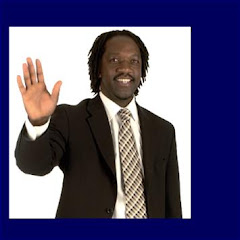A new novel by Brian Selznick, Wonderstruck, to be released Sept. 13 is about two 12-year-old runaways, a girl in 1927 and a boy in 1977, who are both deaf reports Bob Minzesheimer, USA Today (01/09/11)
Their stories intersect at the museum, whose dinosaur skeletons, wildlife dioramas and other natural wonders are "all neatly arranged and organized," Selznick says, "unlike the real world."
At 639 pages — more than 100 pages longer thanHugo— his new novel is one of the biggest (in size and anticipation) kids' books of the fall.
On this day it brings Selznick, 45, back to the museum to talk about his latest novel and Hugo, inspired by the first science-fiction movie. In turn, Selznick's novel inspired Scorsese's first 3-D film.
As in Hugo, Wonderstruck is told in blocks of detailed pencil drawings, most of them wordless, like scenes from a silent movie, that alternate with pages of text. Both novels were painstakingly researched.
Take that iron meteorite, found in Greenland in 1894. Ahnighito (an Inuit name) is the largest meteorite on display in any museum.
"It's the size of a Volkswagen," Selznick says while standing next to it. "It's so heavy that the display stands that support it reach directly to the bedrock beneath the museum."
It's now in the Hall of Meteorites, but Selznick, who likes to "know where everything issupposed to be," knows that in 1927, it was displayed next to the entrance on 77th Street. For the sake of his story, however, he wanted characters to wander about the museum before discovering the meteorite.
"So I moved it," he says with a laugh. "Which was much easier for me to do than the museum."
'Looks beautiful'
He also acknowledges a "debt of gratitude" to one of his favorite children's novels, E.L. Konigsburg's 1968 classic, From the Mixed-Up Files of Mrs. Basil E. Frankweiler, about two kids who run away to live in the Metropolitan Museum of Art.
He has no official role in the movie of Hugo "beyond being a fan." On a visit to the set in London, he was amazed to see "the things that I had made up had become real."
He has seen only "a few moments from the film, but everything I've seen looks beautiful." He felt "a bit like an idiot when I met Asa Butterfield (the young British actor who plays Hugo). I told him, 'Oh, my God, you look just like Hugo. You are Hugo!'"
Scorsese was inspired to make the movie after reading Hugo to his 11-year-old daughter, Francesca.
Screenwriter John Logan says, "Both Marty and I loved the book so much that our challenge was not to let Brian down. We had to boil down the story, to make it more straightforward and simple, but his book and his illustrations became the touchstone in everything we did. Wherever you went on the set, people had copies of the book."
Selznick was inspired by a 1902 movie, A Trip to the Moon, which he saw as a student at the Rhode Island School of Design about 25 years ago.
He had gone to college to become a set designer, but after graduation, he got a job at Eeyore's, a late, lamented children's bookstore in Manhattan, where he painted the window displays and read "all the wonderful children's books I should have read as a kid."
He ended up illustrating a series of biographies for kids, then happened to read a book that mentioned that A Trip to the Moon's French filmmaker, George Melies, collected automata — mechanical toys.
Melies donated them to a museum, where they were neglected and thrown away. Selznick imagined a boy named Hugo finding one and trying to fix it. Melies, who fell on hard times and worked as a toy seller, became a character in Selznick's novel and is played by Kingsley in the movie.
He set Hugo in 1932, when sound was still a novelty in films. They "used bursts of sound, which inspired me to a do a book with bursts of pictures."
Wonderstruck has even more complicated inspirations.
In its barest outline, the story alternates between two deaf kids who run away to New York: Rose in 1927 and Ben in 1977. Both are in search of families.
Rose's story is told almost entirely with illustrations. Ben's is told with words and drawings.
Its inspiration began in 1992, when a friend who worked at the American Museum of Natural History treated Selznick to a behind-the-scenes tour of its workshops.
Two decades later, while working on Hugo, he watched a public TV documentary,Through Deaf Eyes, about the history of Deaf culture. (He notes that deaf, with a lowercase d, refers to the condition of being deaf, while Deaf, with a capital D, refers to the culture.)
Selznick was fascinated to learn how sound, introduced to movies in 1927, affected deaf viewers: "Movies, for the first time, excluded the deaf. I had never thought about that," but he decided his main characters would be deaf.
"In the documentary, a teacher talks about Deafness as 'a visual culture,' and about how the deaf are a 'people of the eye,'" Selznick says. "Sign language is a language you watch, which became a key to how Wonderstruck would be illustrated."
Selznick, who splits his time between Brooklyn and San Diego, where his boyfriend, David Serlin, teaches at the University of California-San Diego, found other help. Two of Serlin's colleagues, Carol Padden and Tom Humphries, a husband-and-wife team who are deaf, are leading scholars of Deaf culture. They helped Selznick "better understand how Ben and Rose would interact with the world."
And Serlin had written a book, Replaceable You: Engineering the Bodyin Postwar America (2004), about a program that offered free reconstructive surgery in the USA to victims of the Hiroshima bombing.
Serlin's book, in turn, inspired a puppet show by Selznick's friend Dan Hurlin, Hiroshima Maidens, that weaves together two stories: the women disfigured in the bombing, told by puppets, and the story of an American boy, told by a Japanese storyteller.
Selznick says: "One story was told with words, and one was told with puppets, until they came together at the end in a beautiful way.
That's how I wanted to structure Wonderstruck, so at the end, readers would not remember what parts they had read and what parts they had seen. It would become a single continuous narrative in the reader's mind."
No e-book is planned
He says that after Hugo, which was awarded the Caldecott Medal in 2007 as the best illustrated children's book, "I wanted to do something similar, but different. I didn't want to just repeat myself."
He has succeeded, says Lisa Von Drasek, librarian at the Bank Street College of Education School in New York: "The title says it all. I was wonderstruck, and kids will be, too. The intertextual connections were like clues on a scavenger hunt."
Selznick says there has been some movie interest in Wonderstruck but no deal yet.
He's adamant that it won't be released as an e-book: "I want it to exist as an object. The turning of physical pages is important to me. I want to feel the weight of a book. The paper in your hands is an intrinsic part of understanding the story."
As for his next book, he knows the setting, plot and characters, which he won't reveal, but not yet "how or why it's going to be illustrated. That still needs to reveal itself. The illustrations need to exist for a reason. They need to be justified within the story." Or, at least, within a Brian Selznick story.







No comments:
Post a Comment